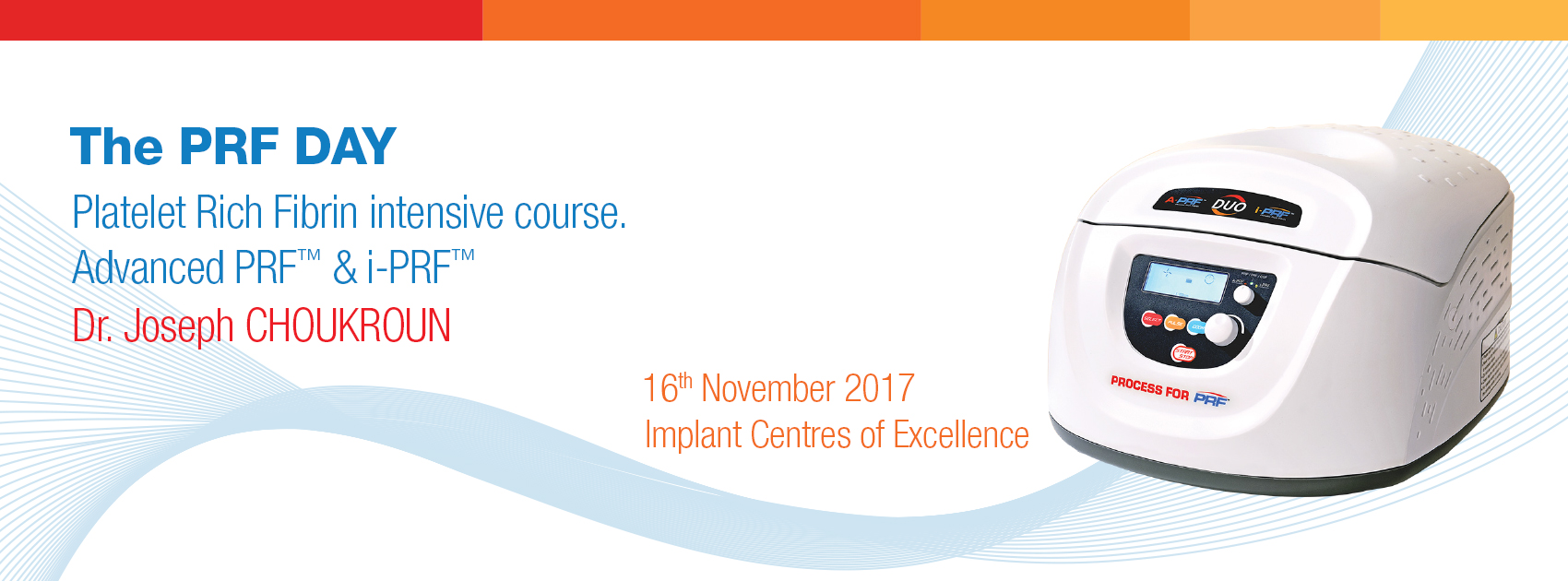
Dr. Joseph CHOUKROUN
• MD, University of Montpellier, France
• Specialist in General Surgery, Anaesthesiology & Pain management
• Owner of Private Pain Clinic, Nice France.
• President of SYFAC, international symposium on growth factors
• Inventor of the PRF techniques: L-PRF, A-PRF & i-PRF
• Author of several scientific papers
• International speaker
Lecture Synopsis.
Biologically, the growth factors are always active and are essential for all types of wound healing. However, in clinic, the most frequent question is: are they always active?
The objective of this course is to understand how the growth factors are active and how we can improve constantly the results in clinical use: in soft tissue management and bone augmentations. The evidence is more known today: the growth factors are released by platelets and white cells however they need several conditions and other substances to be really successful. There are also a lot of factors who counteract the PRF activity.
The new protocol A-PRF, Advanced Platelet Rich Fibrin, based on the low speed centrifugation concept is the most powerful concept as it combines the fibrin network, the growth factors from the platelets and the white cell activity for only one goal: getting the more rapid and thorough vascularisation. A-PRF is a “blood concentrate” and not a “platelet concentrate”!
The A-PRF protocol proposes the better composition for the healing cascade: cytokins with slow release, full natural fibrin, monocytes, granulocytes and plasma proteins, with long term release of autologus BMP-2.
The i-PRF is proposed with the same concept: platelets, white cells, fibrinogen & stem cells in liquid form produced without any additive or anticoagulant: it clots after the injection. The goal is to improve the soft & hard tissue. Injectable PRF is used to make sticky bone graft, by induction a full clotting of the bone graft and to enhance the blood supply.
We introduce in this course the notion of strict and specific protocols: without specific protocols allowed to each clinical indication, the results should be random.
The negative factors that antagonise the PRF successful will be presented in detail.
Course programme
1. Advanced PRF and i-PRF in oral surgery.
Growth factors: biology and physiology, mechanisms of action
Advanced PRF: More cytokines and BMPs.
i-PRF: Injectable PRF that clots after injection
• Composition and influence on tissue healing.
• A-PRF as “matrix” in soft tissue management: protocols, clinical results
• A-PRF as “matrix” in bone augmentation: protocols, clinical results
• A-PRF & i-PRF with biomaterials: what kind of biomaterials do we have to mix with PRF? Protocols, clinical results, new perspectives in bone reconstruction.
• Factors that antagonise the PRF: Vit.D Level, Cholesterol, Contamination, Pressure, Tension: protocols & solutions.
2. Biology and medicine applications in oral surgery
a. Pain management in oral surgery
b. How to reduce and prevent
• Allergic reactions
• Smoking failures in oral surgery
• Contamination and infectious complications in oral surgery
3. Demo
Learning objectives:
The objective of this course is to understand how the growth factors are active and how we can improve constantly the results in clinical use: in soft tissue management and bone augmentations.
• What’s PRF ?
• How to produce and to handle PRF?
• Which indications and protocol for each indication?
• Which factors antagonize the PRF activity?
• How to improve the PRF function?
 CALL US
CALL US